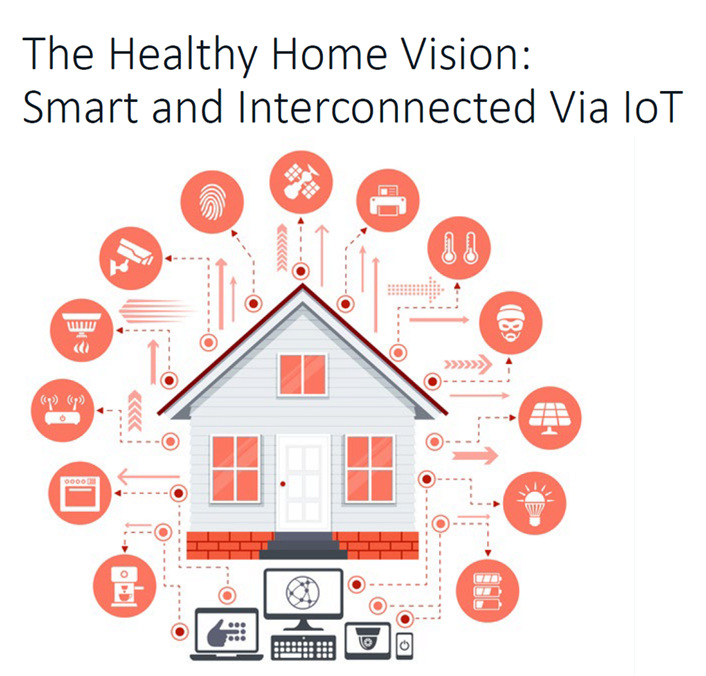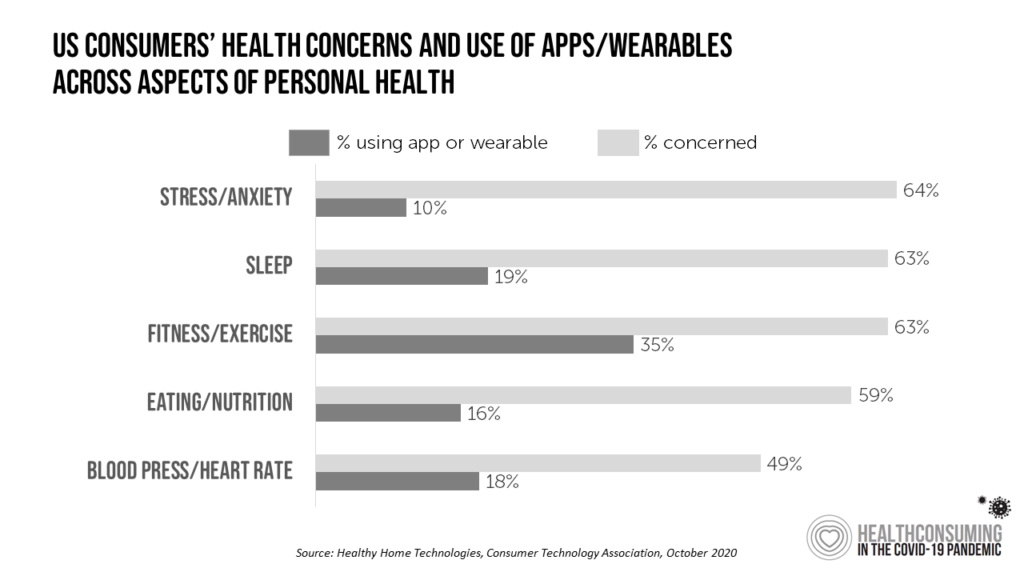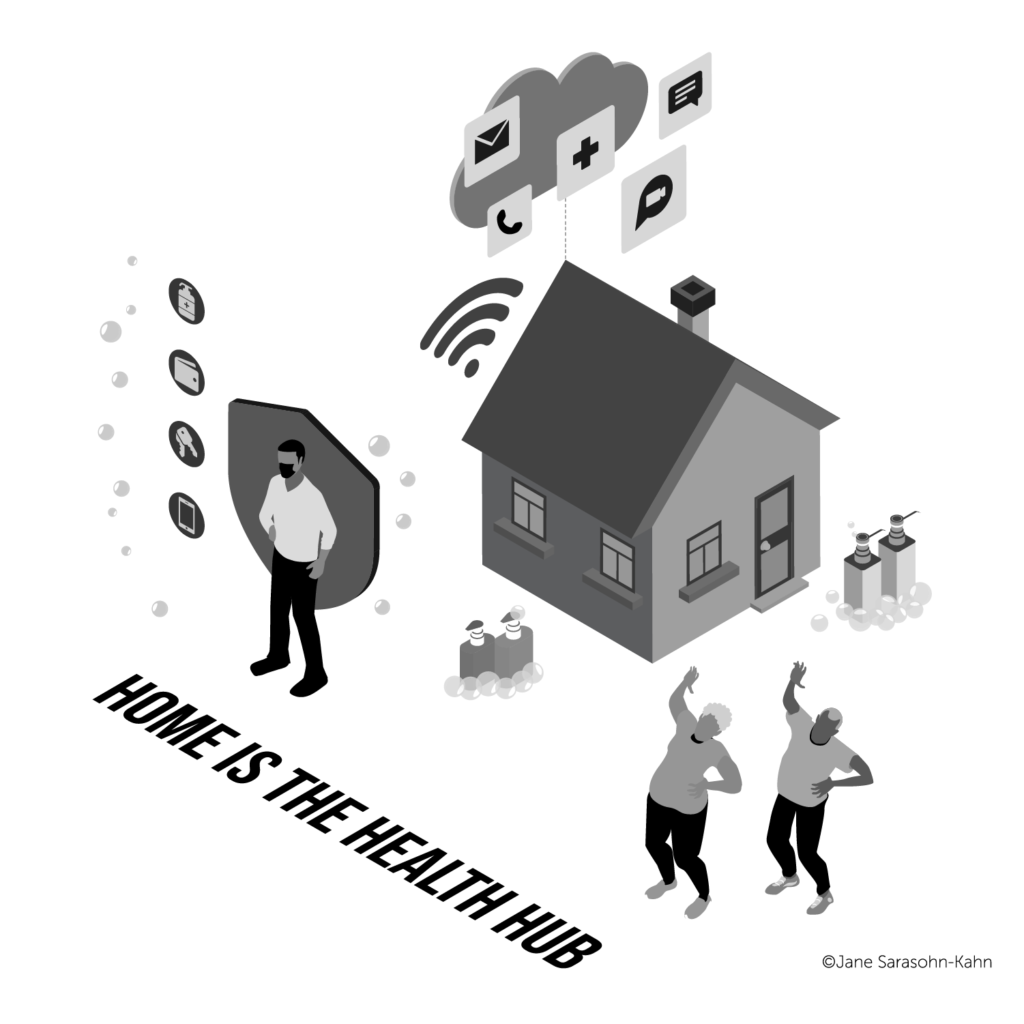 One in two U.S. adults say their concerns about personal health and wellness increased in the past year: in particular, stress and anxiety, and sleep and eating habits. Despite spending more time at home due to the COVID-19 pandemic, few people believe they live in a “healthy home.” The vast majority of consumers are concerned about some aspect of their home’s health, like air or water quality, according to Healthy Home Technologies , a report published in October 2020 by the Consumer Technology Association (CTA), convener of the annual CES.
One in two U.S. adults say their concerns about personal health and wellness increased in the past year: in particular, stress and anxiety, and sleep and eating habits. Despite spending more time at home due to the COVID-19 pandemic, few people believe they live in a “healthy home.” The vast majority of consumers are concerned about some aspect of their home’s health, like air or water quality, according to Healthy Home Technologies , a report published in October 2020 by the Consumer Technology Association (CTA), convener of the annual CES.
For the research, CES interviewed 1,500 U.S. adults in late July 2020, gauging consumers’ interest in personal health and well-being and home technologies’ potential impacts on mental and physical health. CES explored perspectives on air quality (such as smoke and carbon monoxide), cleaning, communication (e.g., smart speakers), cooking and food solutions, energy management, fitness, green and nature, home comfort (e.g., smart thermostats), lighting (e.g., natural lighting for indoors), personal hygiene (e.g., smart toilet), security (like smart cameras), sleep, sound (e.g., white noise generator), and water quality (e.g., filtration systems).
“A healthy home environment may be as crucial as eating healthily and exercising to prevent disease and stay energetic and well,” the report notes, recognizing that healthy home factors are internal (such as cleanliness and security, as well as lighting and noise), and external (such as neighborhood safety, efficient energy use, and geography).
 Personal health and wellness (PHW) concerns are rising in the U.S.: 55% of people are more concerned about PHW compared with twelve months ago, and 64% of people are concerned about COVID-19.
Personal health and wellness (PHW) concerns are rising in the U.S.: 55% of people are more concerned about PHW compared with twelve months ago, and 64% of people are concerned about COVID-19.
Healthy home concerns are growing, but few consumers are using available technologies to address these worries. Less than one-half of people use an app or wearable to manage or improve a health issue such as stress/anxiety, sleep, fitness/exercise, eating/nutrition, or blood pressure or heart rate.
The most commonly-owned healthy home products are solutions for air quality, water quality, personal hygiene, fitness, security, cooking and communication.
Among those consumers who own a healthy home solution, those most highly satisfied own applications for sleep (with 62% of consumers saying the solution exceeds their expectation), energy management, sound, lighting, fitness, personal hygiene, and cleaning. Each of these categories garnered at least 50% of owners attesting to the solutions exceeding their expectations.
 I picked the two most-direct-for-health healthy home solutions — addressing fitness and sleep — to explore the five reasons consumers would select them, shown in the third graphic assembled from the report.
I picked the two most-direct-for-health healthy home solutions — addressing fitness and sleep — to explore the five reasons consumers would select them, shown in the third graphic assembled from the report.
Consumers would likely have a fitness solution to improve mental and physical health, receive it as a gift, acquire it based on word-of-mouth, keep up with the latest tech, and/or have it at home based on convenience.
For sleep solutions, improving mental and physical health also ranked first, followed by convenience, a mate wanting it, recommendations from professionals like a doctor or health coach, and an ability to monitor sleep when not home — in the case of a wearable technology like a Fitbit watch or Oura ring.
A key conclusion in this report is that, while most consumers want to improve the health of their homes, many people do not know “where” to start.
 Health Populi’s Hot Points: The COVID-19 pandemic has accelerated consumers’ embrace of their homes as their health hubs. This trend has been in motion for a while, as more houses got connected to the Internet, people adopted voice technology, and consumers took on greater roles as payers for their health care — with growing deductibles, out-of-pocket costs, and increasing transparency of that spending.
Health Populi’s Hot Points: The COVID-19 pandemic has accelerated consumers’ embrace of their homes as their health hubs. This trend has been in motion for a while, as more houses got connected to the Internet, people adopted voice technology, and consumers took on greater roles as payers for their health care — with growing deductibles, out-of-pocket costs, and increasing transparency of that spending.
This last factor, the patient-as-payor, was the first principle of my book published last year, HealthConsuming: From Health Consumer to Health Citizen. In the book, I explained how consumers were increasingly “Amazon-Primed” for customer service expectations, recognizing what looked and felt “good” at retail, and how retail and digital health ecosystems were evolving to serve patients-as-consumers.
That book ended with a chapter asking whether U.S. health consumers would eventually morph into health citizens, owning and not just renting our health.
The coronavirus public health crisis has accelerated that trend toward Americans’ health citizenship, the topic of my latest book, represented by wearing masks for one another and, this week, the record-breaking votes people in the U.S, cast to communicate their collective political will.
The CTA report calls out that consumers recognize health is made beyond the health care system and medical services — that clean water, clean air, climate change, and green sustainable solutions all play into our wellness. Healthy home-making also helps make healthy communities and can help build a healthier nation, too.
The post COVID-19 Has Accelerated Consumers’ Interest in Healthy Home Tech appeared first on HealthPopuli.com.
COVID-19 Has Accelerated Consumers’ Interest in Healthy Home Tech posted first on https://carilloncitydental.blogspot.com
No comments:
Post a Comment